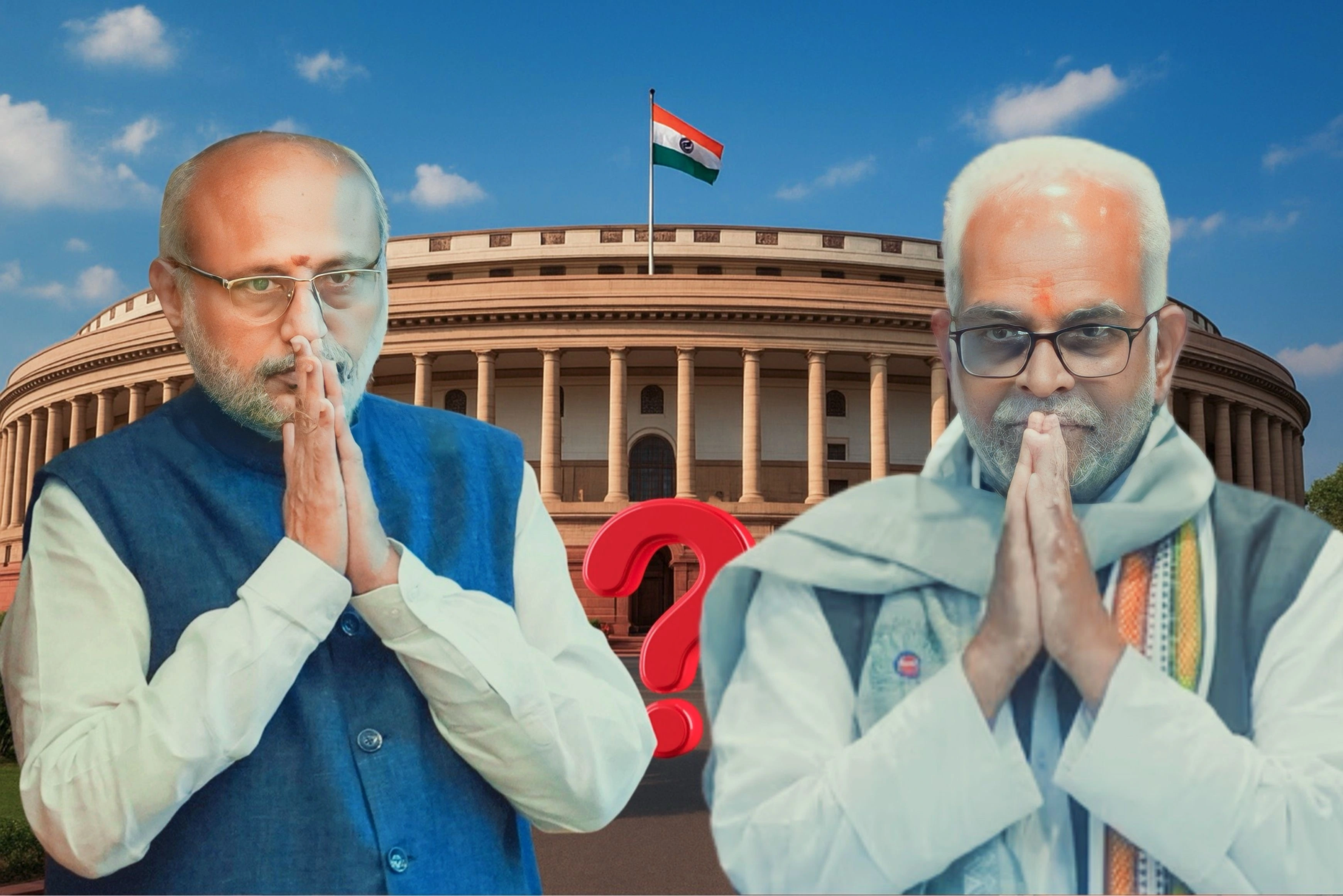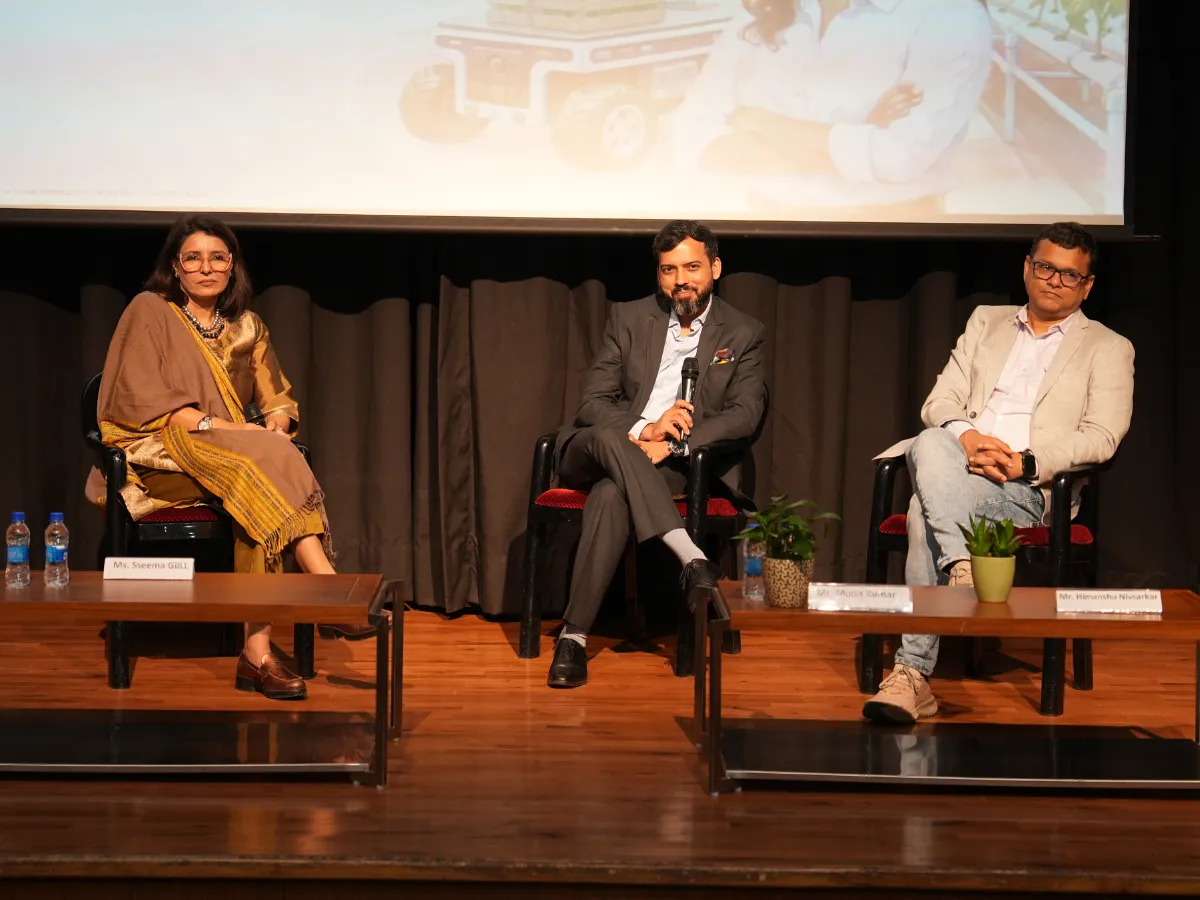Vice-President Election India 2025: CP Radhakrishnan vs B. Sudershan Reddy, NDA vs INDIA bloc, abstaining parties, and Rajya Sabha numbers explained.
 Brajesh Mishra
Brajesh Mishra

The vice-president election India 2025 is not just a constitutional exercise but a high-stakes political showdown. Triggered by the sudden resignation of Jagdeep Dhankhar on July 20, 2025, the mid-term election has become a defining moment for Indian politics. While Dhankhar cited health concerns, his exit generated political debate and left the Rajya Sabha without a presiding officer.
The contest pits the NDA’s CP Radhakrishnan, a veteran politician and the Governor of Maharashtra, against the INDIA bloc’s Justice B. Sudershan Reddy, a retired Supreme Court judge known for landmark rulings.
India rarely witnesses a mid-term vice-president election. Dhankhar’s resignation created an unexpected vacancy, necessitating a new election to fill the Rajya Sabha chairperson’s role.
The Vice-President serves as the ex-officio Chairman of the Rajya Sabha, responsible for maintaining order, interpreting rules, and guiding debates. With major bills expected in upcoming sessions, this vacancy made the office politically significant.
The NDA nominated C. P. Radhakrishnan, a leader with decades of experience:
Radhakrishnan is seen as a steady political hand with strong backing from the BJP and its allies.
The INDIA bloc chose Justice B. Sudershan Reddy, a retired Supreme Court judge:
His candidacy symbolizes the INDIA bloc’s effort to present a moral and ideological counter to the ruling alliance.
Radhakrishnan represents political continuity and southern regional strength, while Reddy embodies judicial authority and opposition symbolism.
The Vice-President is elected by MPs from both Houses of Parliament. Constitutionally, the total strength is 788, but due to vacancies the effective voting strength is slightly lower.
On paper, the NDA entered the election with a comfortable majority and secured additional support from some regional allies. The INDIA bloc trailed behind numerically but hoped the contest would demonstrate opposition unity.
Meanwhile, three regional parties — BJD, BRS, and SAD — abstained, along with a couple of independents, further shaping the final arithmetic.
There is no party whip in such elections, but both camps conducted mock polls and training sessions to prevent invalid ballots.
A victory for CP Radhakrishnan strengthens the NDA’s control over Rajya Sabha proceedings and gives the government a smoother path to push legislation.
For the opposition, Justice Reddy’s candidature was less about winning and more about showcasing unity and sending a political message.
The vice-president poll India 2025 serves as a test of alliances and parliamentary discipline ahead of crucial 2026 state elections.
The vice-president election India 2025 goes beyond filling a constitutional vacancy. It reflects the state of political alliances, the strength of parliamentary numbers, and the symbolic narrative battles between the NDA and the INDIA bloc.
While the NDA entered with a clear advantage, the INDIA bloc’s participation ensured that the contest was framed as more than just arithmetic — it was about political positioning, unity, and symbolism.
Q1. Why was the Vice-President election held early in 2025?
Because Jagdeep Dhankhar resigned on July 20, 2025, citing health reasons, leading to a mid-term vacancy.
Q2. Who were the candidates in India’s Vice-President election 2025?
The NDA fielded CP Radhakrishnan, while the INDIA bloc nominated Justice B. Sudershan Reddy.
Q3. Which parties abstained from the 2025 Vice-President election?
Three regional parties — BJD, BRS, and SAD — along with a couple of independents.
Q4. How is the Vice-President of India elected?
Through a secret ballot by MPs of both Houses, using proportional representation and single transferable vote.
Q5. What impact did Jagdeep Dhankhar’s resignation have on the VP election?
It created an unexpected vacancy and shifted political focus to Rajya Sabha control and alliance strategies.






Sign up for the Daily newsletter to get your biggest stories, handpicked for you each day.
 Trending Now! in last 24hrs
Trending Now! in last 24hrs